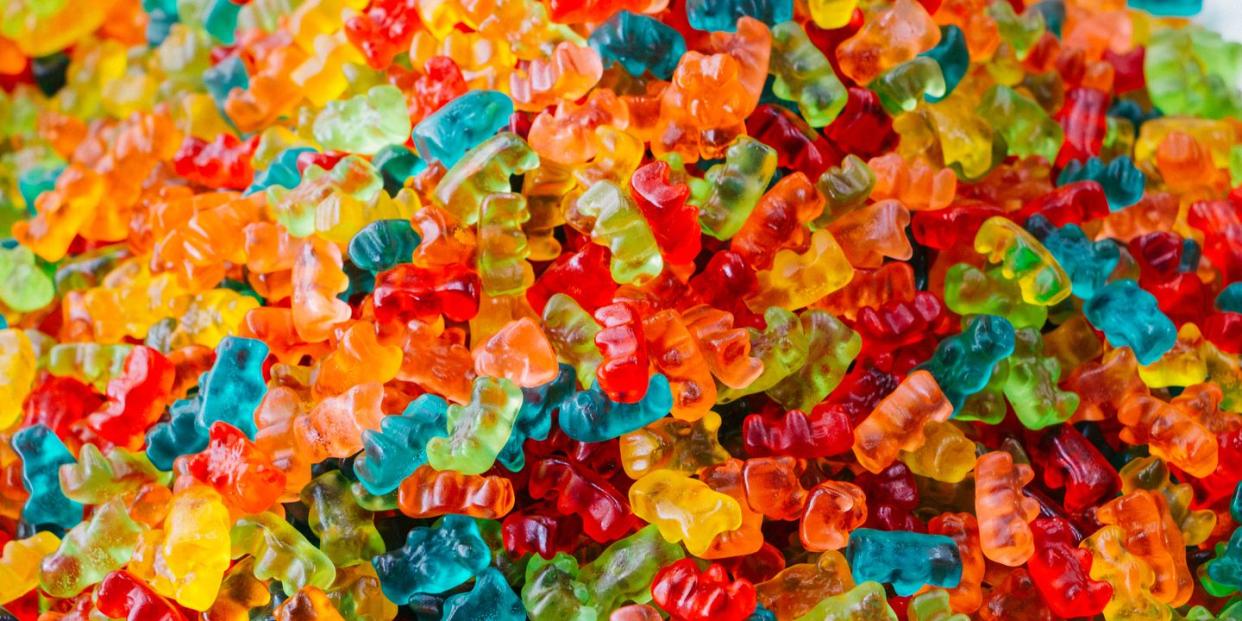Fueling With Candy? Beware of High Fructose Corn Syrup for Your Heart's Sake

According to new research published in the journal Metabolism, the combination of two sugars in high fructose corn syrup may worsen heart health in the long term.
Some candies contain high fructose corn syrup, so if you regularly use the sweet stuff to fuel your rides, it’s worth checking the ingredients and consuming in moderation.
You’re about half a mile from bonking and reach for your tried-and-true candy stash to get your energy stores replenished. But are you upping your potential longer-term health risks in the process? A new study in the journal Metabolism suggests that if your sweet treat has high fructose corn syrup, the answer may be yes.
Researchers looked at 145 people, ages 18 to 40 years old, for a two-week study period. They provided beverages sweetened with either aspartame, glucose, fructose, or high fructose corn syrup (HFCS). Blood samples were collected before and after the beverage consumption.
They expected to see elevations in triglycerides—one of the markers of poor heart health—with the fructose, since that’s been shown in previous studies to be an issue. Excess fructose ends up in the liver, which bumps up production of uric acid and triglycerides to compensate, raising risk of heart disease, as well as fatty liver disease.
By contrast, glucose doesn’t overload the liver and is instead used by the entire body. The enzyme responsible for how much glucose is pulled out the blood by the liver is only turned on when the body needs energy.
That’s why the researchers were surprised to see the combination of fructose and glucose, which is found in HFCS, appeared to be worse than fructose alone.
“The biggest takeaway is this unexpected finding that certain blood risk factors were more increased when the subjects consumed HFCS compared to the same amount of pure fructose,” lead study author Kimber Stanhope, Ph.D., R.D., a research nutritional biologist in the department of molecular biosciences at University of California, Davis, told Bicycling.
Also, it didn’t seem to take much to increase triglyceride levels, added study coauthor Bettina Hieronimus, Ph.D., a researcher at the Institute of Child Nutrition at Max Rubner-Institut in Germany.
“Even a 10-percent dose caused increases in risk factors compared to a pre-study level,” she told Bicycling.
Although these findings may mean it’s helpful to check your favorite de-bonking candy for HFCS, Stanhope emphasized that the results shouldn’t be a distraction from what’s already well established: Excessive amounts of sugar added to processed foods aren’t good for you, whatever the type.
Although very active people were not included in the study she said, more research will need to be done to determine if exercise is protective against sugar’s effects. But in the meantime, don’t count on extra miles to counteract potentially negative impacts on blood lipids.
“Until we have a trial that assesses changes in risk factors in athletes and non-athletes, it may be prudent for even athletes to monitor their added sugar intake,” she said.
While that doesn’t mean giving up your favorite ride fuel candy forever, balancing it out with options that contain naturally occurring sugars, like dried fruit, is a good bet.
Subscribe to Bicycling All Access for more health news and tips!
You Might Also Like

